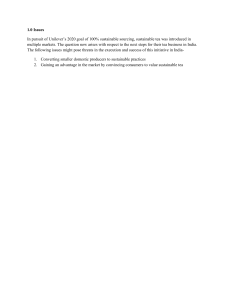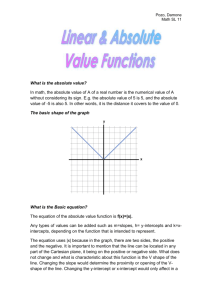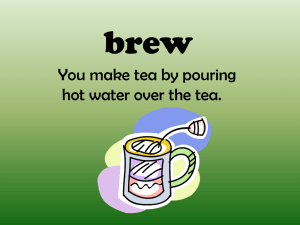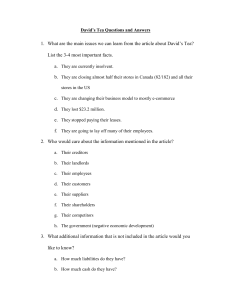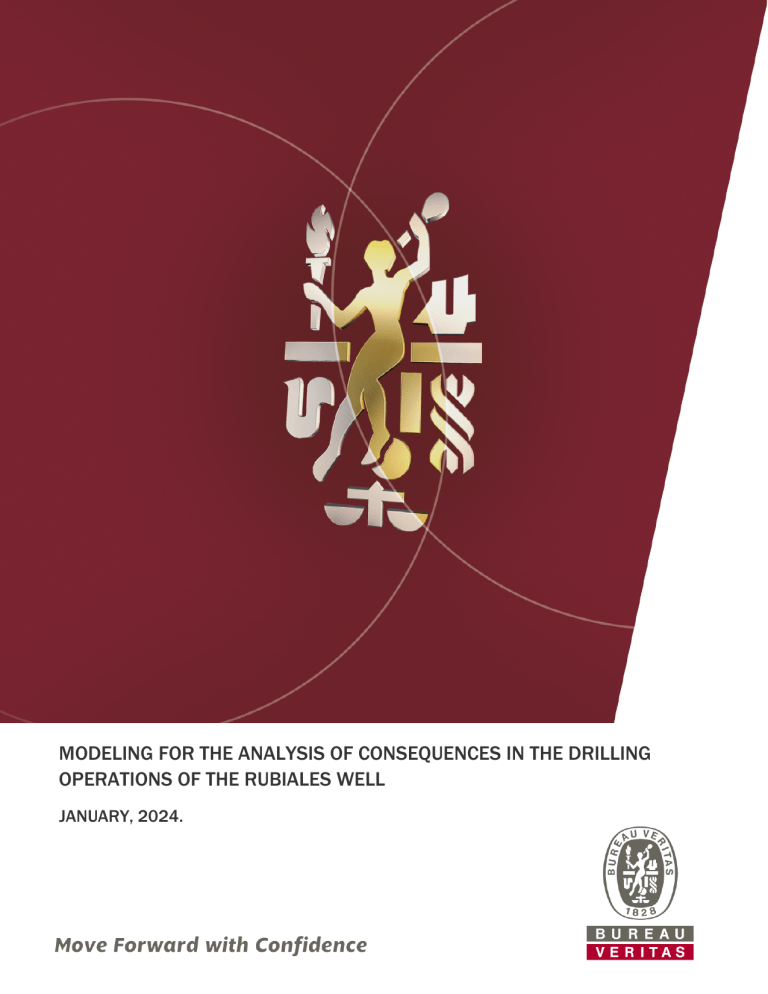
MODELING FOR THE ANALYSIS OF CONSEQUENCES IN THE DRILLING OPERATIONS OF THE RUBIALES WELL JANUARY, 2024. TECHNICAL SERVICES FOR QUALITY ASSURANCE, RISK MANAGEMENT AND INSPECTION OF EQUIPMENT AND MATERIALS FOR ECOPETROL S.A AND ITS BUSINESS GROUP. MODELING FOR THE ANALYSIS OF CONSEQUENCES IN THE DRILLING OPERATIONS OF THE RUBIALES WELL CONTENT 1 OBJECTIVE............................................................................................................................................................ 4 2 SCOPE................................................................................................................................................................. 4 3 CONTEXT............................................................................................................................................................. 4 4 ANALYSIS OF CONSEQUENCES ........................................................................................................................ 4 5 4.1 SUBSTANCES LISTS .................................................................................................................................. 4 4.2 SUBSTANCES COMPOSITION.................................................................................................................... 5 4.3 PROCESS CONDITIONS.............................................................................................................................. 5 4.4 ENVIRONMENTAL CONDITIONS ................................................................................................................... 6 4.5 LIST OF LAUNCHERS.................................................................................................................................. 6 4.6 IDENTIFICATION OF MODELED SCENARIOS....... ..................................................................................... 7 4.7 RANKS OF AFFECTION.... ......................................................................................................................... 9 4.8 RESULTS................................................................................................................................................... 11 4.9 RESULT ANALYSIS............. ..................................................................................................................... 13 4.9.1 POZO RUBIALES SYSTEM – MAJOR SCENARIO (880 PSI) ........................................................... 13 4.9.2 POZO RUBIALES SYSTEM – MINOR SCENARIO (880 PSI) ... ........................................................13 4.9.3 TEA SYSTEM (3M) – CATASTROPHIC SCENARIO (ATM) ............................................................... 14 4.9.4 TEA SYSTEM (7M) – CATASTROPHIC SCENARIO (ATM)................................................................ 14 4.9.5 TEA SYSTEM (7M) – CATASTROPHIC SCENARIO (ATM). .............................................................. 14 4.9.6 RESULTS SUMMARY........................................................................................................................14 RECOMENDATIONS..........................................................................................................................................16 ANNEX A1. GRAPHIC REPRESENTATION OF POTENTIAL AREAS OF AFFECTION FOR THE POZO RUBIALES SYSTEM – MAJOR SCENARIO (880 PSI).................................................................................................................18 ANNEX A2. GRAPHIC REPRESENTATION OF POTENTIAL AREAS OF AFFECTION FOR THE POZO RUBIALES SYSTEM – MINOR SCENARIO (880 PSI) ........................................................................................................... 19 ANNEX B1. GRAPHIC REPRESENTATION OF POTENTIAL AREAS OF AFFECTION TEA SYSTEM (3M) – CATASTROPHIC SCENARIO (ATM) .........................................................................................................................20 ANNEX B2. GRAPHIC REPRESENTATION OF POTENTIAL AREAS OF AFFECTION TEA SYSTEM (7M) – CATASTROPHIC SCENARIO (ATM).. .........................................................................................................................21 ANNEX B3. GRAPHIC REPRESENTATION OF POTENTIAL AREAS OF AFFECTION TEA SYSTEM (10M) – CATASTROPHIC SCENARIO (ATM).. .........................................................................................................................22 2|Pa g e TECHNICAL SERVICES FOR QUALITY ASSURANCE, RISK MANAGEMENT AND INSPECTION OF EQUIPMENT AND MATERIALS FOR ECOPETROL S.A AND ITS BUSINESS GROUP. MODELING FOR THE ANALYSIS OF CONSEQUENCES IN THE DRILLING OPERATIONS OF THE RUBIALES WELL TABLE INDEX Table 1. List of Substances....... ............................................................................................................................... 4 Table 2. Rubiales Well Fluid Composition......... ..................................................................................................... 5 Table 3. Composition of Tea Fluid. ......................................................................................................................... 5 Table 4. Process Conditions Analysis of Consequences Pozo Rubiales................................................................ 6 Table 5. Environmental Conditions Analysis of Consequences Pozo Rubiales. ................................................... 6 Table 6. List of Initiators Analysis of Pozo Rubiales Consequences...................................................................... 6 Table 7. List of Pozo Rubiales Consequence Analysis Scenarios................. ......................................................... 8 Table 8. Ranges of Affectation by Thermal Radiation.. .......................................................................................... 9 Table 9. Ranges of Affectation by Overpressure... ................................................................................................10 Table 10. Ranges of Affectation by Flammable Cloud. ........................................................................................ 10 Table 11. Rates of Affectation Analysis of Pozo Rubiales Consequences... ...................................................... 12 Table 12. Final Frequencies. .............................................................................................................................. 13 Table 13. Summary of results Analysis of Rubiales Consequences....................................................................15 3|Pa ge TECHNICAL SERVICES FOR QUALITY ASSURANCE, RISK MANAGEMENT AND INSPECTION OF EQUIPMENT AND MATERIALS FOR ECOPETROL S.A AND ITS BUSINESS GROUP. MODELING FOR THE ANALYSIS OF CONSEQUENCES IN THE DRILLING OPERATIONS OF THE RUBIALES WELL 1 OBJECTIVE • Carry out modeling for the analysis of consequences in fires, explosions and cloud dispersion in drilling operations. • Establish safe distance for the location of personnel and camps. 2 SCOPE This report applies to the drilling operations of the Rubiales Well belonging to Ecopetrol S.A. 3 CONTEXT For the operation, hypothetical process safety events have been defined that can be presented as: minor scenarios, which include hydrocarbon releases through orifices smaller than 2", major scenarios, which include hydrocarbon releases through 2" orifices and catastrophic scenarios, which include total pipe rupture or blowout events. The probability of occurrence of these events ranges from frequent for minor scenarios to very unlikely for catastrophic scenarios (includes total rupture of equipment or pipeline and blowout events). 4 ANALYSIS OF CONSEQUENCES 4.1 SUBSTANCES LIST The list of substances modeled in this analysis of consequences is shown below: Name Code Quantity Present Classification GHS UN Number MET NE H221 1971 CRU NE H226 H411 1267 MET NE H221 1971 Safety Rhombus Pozo Rubiales Tea Table 1. Lists df Substances. 4|Pa ge TECHNICAL SERVICES FOR QUALITY ASSURANCE, RISK MANAGEMENT AND INSPECTION OF EQUIPMENT AND MATERIALS FOR ECOPETROL S.A AND ITS BUSINESS GROUP. MODELING FOR THE ANALYSIS OF CONSEQUENCES IN THE DRILLING OPERATIONS OF THE RUBIALES WELL 4.2 SUBSTANCES COMPOSITION Component % Molar C6 (Hexane) 0,30 C8 (Octane) 0,04 C9 (Nonane) 0,06 C10 (Decane) 0,26 C15 (Pentadecane) 15,09 C20 (Eicosane) 25,13 C30 (Triacontane) 32,79 C32 (Dotriacontane) 26,33 Table 2. Rubiales Well Fluid Composition. Component % Molar CO2 (CO2) 5,12 N2 (Nitrogen) 9,24 C1 (Methane) 84,96 c3 (Ethane) 0,11 c3 (Propane) 0,03 iC4 (i-Butane) 0,01 nC4 (n-Butane) 0,02 iC5 (i-Pentane) 0,02 nC5 (n-Pentane) 0,01 C6 (Hexane) 0,10 C7 (Heptane) 0,12 C8 (Octane) 0,11 C9 (Nonane) 0,08 C10 (Decane) 0,06 C15 (Pentadecane) 0,01 Table 3. Composition of Tea Fluid. 4.3 PROCESS CONDITIONS This consequence analysis was developed based on the process conditions shown below and defined by mutual agreement with Ecopetrol S.A. Equipment or Element Pressure (psi) Temp. (°F) Volume/Flow Pozo Rubiales 880 154 NE 5|Pa ge TECHNICAL SERVICES FOR QUALITY ASSURANCE, RISK MANAGEMENT AND INSPECTION OF EQUIPMENT AND MATERIALS FOR ECOPETROL S.A AND ITS BUSINESS GROUP. MODELING FOR THE ANALYSIS OF CONSEQUENCES IN THE DRILLING OPERATIONS OF THE RUBIALES WELL Equipment or Element Pressure (psi) Temp. (°F) Volume/Flow Atm 154 NE Tea Table 4. Process Conditions Consequence Analysis Pozo Rubiales. 4.4 ENVIRONMENTAL CONDITIONS One of the key factors to consider when determining the post-release behavior of a substance is the environmental conditions. Therefore, it is necessary to define the environmental characteristics that determine the behavior of the product after the loss of containment and therefore the effects that their materialization may generate. Area Parameter Pozo Rubiales Value Ambient Temperature Day (ºF) 95 Ambient Temperature Night (ºF) 68 Relative Humidity Day (%) 75 Relative Humidity N ight (%) 88 Wind speed and stability (m/s) Entre 1F y 3D Table 5. Environmental Conditions Consequence Analysis Pozo Rubiales. 4.5 LISTS OF LAUNCHERS Table 6 presents a summary of the launchers analyzed for each of the equipment defined jointly with Ecopetrol S.A and belonging to the Rubiales Well. Equipment or Element • Pozos (Well head, production line). Generic launcher (G) / Specific launcher (S) Pozo Rubiales • PP1 (G) • • PP3 (G) • • PP4 (G) Launcher Description PP1: Leak continues through a ¼ (6.35 mm) hole in the surface production line. PP3: Continuous leak of smaller diameter (between 50 mm to 76 mm; 2” to 3”) PP4: Total breakage on the production line. • • Teas • S5 (S) • Relief of the entire mass of design gas in torches. Table 6. List of Launchers Analysis of Consequences Pozo Rubiales.1 1 Nomenclature and descriptors taken from the HSE-G-022 guide 6|Pa ge TECHNICAL SERVICES FOR QUALITY ASSURANCE, RISK MANAGEMENT AND INSPECTION OF EQUIPMENT AND MATERIALS FOR ECOPETROL S.A AND ITS BUSINESS GROUP. MODELING FOR THE ANALYSIS OF CONSEQUENCES IN THE DRILLING OPERATIONS OF THE RUBIALES WELL 4.6 IDENTIFICATION OF MODELED SCENARIOS Starting from the Initiators considered applicable (defined in Table 6) and the type of discharge obtained, the identification of the final scenarios was carried out from the event trees related in the HSE-G-022 guide and evidenced in the Figure 1 and Figure 2. Figure 1. Event tree for a continuous download Figure 2. Event tree for instant download. 7|Pa ge TECHNICAL SERVICES FOR QUALITY ASSURANCE, RISK MANAGEMENT AND INSPECTION OF EQUIPMENT AND MATERIALS FOR ECOPETROL S.A AND ITS BUSINESS GROUP. MODELING FOR THE ANALYSIS OF CONSEQUENCES IN THE DRILLING OPERATIONS OF THE RUBIALES WELL The summary of the final scenarios to be considered in this consequence analysis is listed in the following Table: Scenario Code Equipment Launcher Pozo Rubiales /PP4/Three-phase Pozo Rubiales (880 psi) PP4: Total breakage in the superficial production line. 4 1/2". Pozo Rubiales/PP3V/Three-phase Pozo Rubiales (880 psi) PP3-V: Leakage continues through the smallest diameter connection (between 50 mm to 76 mm; 2” to 3”). Vertical Release Pozo Rubiales/PP345V/Three-phase Pozo Rubiales (880 psi) PP3-45V: Leakage continues through the smallest diameter connection (between 50 mm to 76 mm; 2” to 3”). Release 45° Vertical Pozo Rubiales/PP1/Three-ph ase Pozo Rubiales (880 psi) PP1: Continuous leak through a ¼” (6.35 mm) hole in the surface production line Horizontal Release Tea (3m)/S5/Gas Tea (Atm) Tea (7m)/S5/Gas Tea (10m)/S5/Gas Substance Biphasic Biphasic Final Event Jet of Fire Pool Fire Jet of Fire Pool Fire Biphasic Jet of Fire Pool Fire Biphasic Flare Jet of Fire Pool Fire Fireball S5: Relief of the entire mass of design gas in torches. Gas Jet of fire Tea (Atm) S5: Relief of the entire mass of design gas in torches. Gas Jet of fire Tea (Atm) S5: Relief of the entire mass of design gas in torches. Gas Jet of fire Table 7. List of Pozo Rubiales Consequence Analysis Scenarios. 8|Pa ge TECHNICAL SERVICES FOR QUALITY ASSURANCE, RISK MANAGEMENT AND INSPECTION OF EQUIPMENT AND MATERIALS FOR ECOPETROL S.A AND ITS BUSINESS GROUP. MODELING FOR THE ANALYSIS OF CONSEQUENCES IN THE DRILLING OPERATIONS OF THE RUBIALES WELL 4.7 AFFECTION RANGES Table 8, Table 9 and Table 10 present the ranges of affectation by thermal radiation for personnel and equipment, by overpressure and by flammable cloud respectively. Radiation kW/m2 Conditions 37,5 Sufficient intensity to cause damage to process equipment. 20,9 Probability zone of 90% lethality for exposure times greater than 30 seconds. 14,5 9,5 Probability zone of 50% lethality for exposure times greater than 30 seconds. No staff is expected in this area. Maximum radiant heat intensity anywhere where emergency action by personnel is required. When personnel enter or work in an area with the potential for radiant heat intensity greater than 6.3 kW/m2, consideration should be given to wearing special protective clothing (e.g. a fire protective suit). Safety precaution: It is important to recognize that appropriately clothed personnel cannot tolerate thermal radiation at 9.5 kW/m2 for more than a few seconds. 6,3 Maximum intensity of radiant heat where personnel without protection but with adequate a clothing may require emergency actions in a time no longer than 30 s. 4,7 Maximum radiant heat intensity in areas where unprotected but appropriatelya lothed personnel may require emergency action within a 2 to 3 minute time period. 1,6 Maximum intensity of radiant heat in any location where appropriatelya clothed personnel may be continuously exposed. Appropriate clothing consists of a hard hat, long-sleeved shirts with buttoned cuffs, work gloves, long-legged pants, and work shoes. Appropriate clothing minimizes direct skin exposure to thermal radiation. a Table 8. Ranges of Affectation by Thermal Radiation Shock Wave Range (psi) Impact on people and infrastructure 14 Maximum shock wave peak that an unconfined explosion of hydrocarbon vapors can develop. This level of shock wave does not cause mortality, but it does reach a 45% probability of being affected by a ruptured eardrum. Probable total destruction of buildings. 6,4 Probability of involvement of 10% due to ruptured eardrum. Above this value, there is almost complete destruction of houses. Possible damage to storage tanks and process equipment. 4,3 100% lethality is considered for people who are within this area as a result of falling objects and dispersion of projectiles. Breakage of storage tanks. 3,25 Eardrum rupture threshold (1% probability). Heavy machinery (3000 lbs.) suffers minor damage. 3 2 Within this zone, severe damage occurs to steel and masonry structures (industrial buildings). From this overpressure, the partial collapse of roofs and walls of houses occurs. 9|Pa ge TECHNICAL SERVICES FOR QUALITY ASSURANCE, RISK MANAGEMENT AND INSPECTION OF EQUIPMENT AND MATERIALS FOR ECOPETROL S.A AND ITS BUSINESS GROUP. MODELING FOR THE ANALYSIS OF CONSEQUENCES IN THE DRILLING OPERATIONS OF THE RUBIALES WELL Shock Wave Range (psi) 0,4 Impact on people and infrastructure Establishes the safety distance for the population in the event of an explosion. Shock wave levels sufficient to cause minor damage to house and building structures (glass breakage). Table 9. Ranges of Affectation by Overpressure. Condition LII LII/2 Description Area in which there should be no ignition sources. A 100% probability of death of a person is assumed. It corresponds to the distance at which the cloud dilutes up to 1/2 of the LII. Table 10. Ranges of Affectation by Flammable Cloud. 10 | P a g e TECHNICAL SERVICES FOR QUALITY ASSURANCE, RISK MANAGEMENT AND INSPECTION OF EQUIPMENT AND MATERIALS FOR ECOPETROL S.A AND ITS BUSINESS GROUP. . MODELING FOR THE ANALYSIS OF CONSEQUENCES IN THE DRILLING OPERATIONS OF THE RUBIALES WELL 4.8 RESULTS Modeling was performed for environmental conditions in the range between 1.5F and 3D due to the absence of formal and robust site statistics. The results listed below present the radius of impact (in meters) for each of the systems/equipment analyzed. The meaning of the different levels of thermal radiation, overpressure and flammable cloud can be seen in Table 8, Table 9 and Table 10 respectively. Equipment Scenario type Descripción Escenario Scenario Code Final Event Inflammability LFL Pozo Rubiales Pozo Rubiales Pozo Rubiales Pozo Rubiales Catastrophic 880 psi Major 880 psi Major 880 psi Minor 880 psi Blowout 7" 2" vertical leak Pozo Rubiales/PP4/Biphasic Pozo Rubiales/PP3V/Biphasic Leakage 2" Pozo Rubiales/PP345° Vertical 45V/Biphasic Leakage 0.25" Horizontal Pozo Rubiales/PP1/Biphasic Radiation (kW/m2) Overpressure (psi) 1,6 5 6,3 7,3 9,5 14,5 20,9 280 153,6 132 118,4 94 50,4 11,7 Jet Fire 3D 160,7 95,2 84,7 78,2 67 48,8 31 3,3 Pool Fire 3D 509,7 492,9 490,1 488,3 485 479,4 476,5 474,3 Jet Fire 1.5F 80,2 44,9 39 35,3 28,8 17,4 Jet Fire 3D 86,2 51,4 45,9 42,6 36,8 27,5 18,2 Pool Fire 1.5F 418,2 400,6 397,6 395,8 392,6 388,3 385,7 383,5 Pool Fire 3D 638,3 621,8 619,2 617,5 614,3 608,7 605,7 603,4 Jet Fire 1.5F 87,2 54,8 49,7 46,6 41,3 35,1 30,2 19,1 Jet Fire 3D 92,2 58,3 53 49,8 44,4 37,1 32,4 23,9 Pool Fire 1.5F 385,7 367,8 364,8 363 359,8 355,4 352,9 350,7 Pool Fire 3D 544,5 527,7 525 523,2 519,9 514,3 511,5 509,2 9,6 6,5 6,1 5,9 5,5 4,9 4,5 3,9 Jet Fire 1.5F Flash Fire 1.5F 24,2 Flash Fire 3D 29,7 Jet Fire 1.5F LFL/2 37,5 0,4 2 3 4,3 6,4 11 | P a g e TECHNICAL SERVICES FOR QUALITY ASSURANCE, RISK MANAGEMENT AND INSPECTION OF EQUIPMENT AND MATERIALS FOR ECOPETROL S.A AND ITS BUSINESS GROUP. MODELING FOR THE ANALYSIS OF CONSEQUENCES IN THE DRILLING OPERATIONS OF THE RUBIALES WELL Equipo Tea Tea Tea Scenary Type Scenario Description Scenario Code Catastrophic Atm Discharge without ignition 8” Tea (3m)/S5/Gas Catastrophic Atm Discharge without ignition 8” Tea (7m)/S5/Gas Catastrophic Atm Discharge without ignition 8” Tea (10m)/S5/Gas * Ignition is assumed 30 meters from the loss of containment zone.. Final Event Inflammability LFL LFL/2 Radiation (kW/m2) Overpressure (psi) 1,6 5 6,3 7,3 9,5 14,5 20,9 37,5 Jet Fire 3D 10,5 7 6,5 6,3 5,8 5,2 4,7 4,1 Pool Fire 1.5F 66,9 54,2 52,2 51 48,9 45,6 42,5 39,3 Pool Fire 3D 82,3 70 68,2 67,2 65,4 62,4 58,8 54,6 Jet Fire 1.5F 21,7 Jet Fire 3D 26,2 Jet Fire 1.5F 16,2 Jet Fire 3D 23 Jet Fire 3D 18,5 0,4 2 3 4,3 6,4 6,5 Table 11. Radio of Affectation Analysis of Consequences Pozo Rubiales. 12 | P a g e TECHNICAL SERVICES FOR QUALITY ASSURANCE, RISK MANAGEMENT AND INSPECTION OF EQUIPMENT AND MATERIALS FOR ECOPETROL S.A AND ITS BUSINESS GROUP. MODELING FOR THE ANALYSIS OF CONSEQUENCES IN THE DRILLING OPERATIONS OF THE RUBIALES WELL Scenario Code Equipment Pozo Rubiales /PP4/Three-phase Pozo Rubiales (880 psi) Pozo Rubiales/PP3V/Three-phase Pozo Rubiales (880 psi) Pozo Rubiales/PP345V/Three-phase Pozo Rubiales (880 psi) Pozo Rubiales/PP1/ Three-phase Pozo Rubiales (880 psi) Launcher Frequency (events/year) Ignition Probability Final Frequency (Events/year) PP4: Total breakage in the superficial production line. 4 1/2". 6,50E-05 6,00E-01 3,90E-05 4,40E-05 2,35E-01 1,03E-05 4,40E-05 2,35E-01 1,03E-05 1,00E-04 8,31E-03 8,31E-07 PP3-V: Leakage continues through the smallest diameter connection (between 50 mm to 76 mm; 2” to 3”). Vertical Release PP3-45V: Leakage continues through the smallest diameter connection (between 50 mm to 76 mm; 2” to 3”). Release 45° Vertical PP1: Continuous leak through a ¼” (6.35 mm) hole in the surface production line Horizontal Release Table 12. Final Frequencies.2 4.9 RESULTS ANALYSIS The simulations were carried out for catastrophic scenarios, major scenarios and minor scenarios. Given that catastrophic scenarios are unlikely and that the wind speed is on average between 1.5m/s and 3m/s, the results will be analyzed based on the largest scenarios and the most critical distances obtained between a stability of 1.5 F and 3D. 4.9.1 POZO RUBIALES SYSTEM – MAJOR SCENARIO (880 PSI) • • • • No distances are reported for the LII (lower flammability limit). Effects for radiation of 37.5 kW/m2 by Jet Fire are on the order of 603 meters for a release from the system. Effects for radiation of 6.3 kW/m2 by Jet Fire are on the order of 619 meters for a release from the system. The distance for radiation values o f 1.6 kW/m2 by Jet Fire is of the order of 638 meters for a release system. See Annex A1. 4.9.2 POZO RUBIALES SYSTEM – MINOR SCENARIO (880 PSI) • 2 The greatest effects due to flammable cloud (flare) are found, for the LII (lower flammability limit), in the order of 29.7 meters caused by the discharge without ignition. Source: • • • • • Guide for Quantitative Risk Analysis HSE-G-022 - Annex 6. IOGP Report 434-01 RISK ASSESSMENT DATA DIRECTORY: Process Release Frequencies. IOGP Report 434-02 RISK ASSESSMENT DATA DIRECTORY: Blowout Frequencies. IOGP Report 434-06 RISK ASSESSMENT DATA DIRECTORY: Ignition Probabilities. API 581-Third Edition. Risk Based Inspection Methodology. 13 | P a g e TECHNICAL SERVICES FOR QUALITY ASSURANCE, RISK MANAGEMENT AND INSPECTION OF EQUIPMENT AND MATERIALS FOR ECOPETROL S.A AND ITS BUSINESS GROUP. MODELING FOR THE ANALYSIS OF CONSEQUENCES IN THE DRILLING OPERATIONS OF THE RUBIALES WELL • • • Effects for radiation of 37.5 kW/m2 by Jet Fire are on the order of 54.6 meters for a release from the system. Effects for radiation of 6.3 kW/m2 by Jet Fire are on the order of 68.2 meters for a release from the system. The distance for radiation values o f 1.6 kW/m2 by Jet Fire is of the order of 82.3 meters for a release from system. See Annex A2. 4.9.3 TEA SYSTEM (3M) – CATASTROPHIC SCENARIO (ATM) • • • • No distances are reported for the LII (lower flammability limit). Radiation levels of 37.5 kW/m2 are not reached. Radiation levels of 6.3 kW/m2 are not reached. The distance for radiation values of 1.6 kW/m2 by Jet Fire is of the order of 26.2 meters for a release from the System. See Annex B1. 4.9.4 TEA SYSTEM (7M) – CATASTROPHIC SCENARIO (ATM) • • • • No distances are reported for the LII (lower flammability limit). Radiation levels of 37.5 kW/m2 are not reached. Radiation levels of 6.3 kW/m2 are not reached. The distance for radiation values of 1.6 kW/m2 by Jet Fire is of the order of 26.2 meters for a release from the System. See Annex B2. 4.9.5 TEA SYSTEM (7M) – CATASTROPHIC SCENARIO (ATM) • • • • No distances are reported for the LII (lower flammability limit). Radiation levels of 37.5 kW/m2 are not reached. Radiation levels of 6.3 kW/m2 are not reached. The distance for radiation values of 1.6 kW/m2 by Jet Fire is of the order of 18.5 meters for a release from the sysyem. See Annex B3. 4.9.6 SUMMARY OF RESULTS Table 13 presents the summary of the impact radio (in meters) of the major and minor scenarios for the Rubiales and Tea well; These radii are graphed in ISO contours which can be detailed in the related annex (each ISO contour is generated according to the color detailed in the table). If you wish to observe all the distances obtained for each of the scenarios applicable in this analysis, refer to Table 11. 14 | P a g e TECHNICAL SERVICES FOR QUALITY ASSURANCE, RISK MANAGEMENT AND INSPECTION OF EQUIPMENT AND MATERIALS FOR ECOPETROL S.A AND ITS BUSINESS GROUP. MODELING FOR THE ANALYSIS OF CONSEQUENCES IN THE DRILLING OPERATIONS OF THE RUBIALES WELL The meaning of the ranges of affectation by thermal radiation for personnel and equipment, by overpressure and by flammable cloud can be detailed in Table 8, Table 9 and Table 10 respectively. Equipment Scenary Type Scenary Description Scenario Code Major 880 Pozo Rubiales psi 2" Vertical Leakage Pozo Rubiales/PP3V/Biphasic Pozo Minor 880 Rubiales psi Leakage 0.25" Horizontal Pozo Rubiales/PP1/Biphasic Discharge without ignition 8” Tea Tea Tea Catastrophic Atm Catastrophic Atm Catastrophic Atm Final Event Infla mma bility LFL Pool Fire 3D Flash Fire 3D Radiation (kW/m2) 1,6 6,3 Annex 37,5 638,3 619,2 603,4 A1 29,7 A2 Pool Fire 3D 82,3 68,2 54,6 Tea (3m)/S5/Gas Jet Fire 3D 26,2 B1 Discharge without ignition 8” Tea (7m)/S5/Gas Jet Fire 3D 23 B2 Discharge without ignition 8” Tea (10m)/S5/Gas Jet Fire 3D 18,5 B3 Table 13. Summary of results Analysis of Rubiales Consequences. According to best practices, owners/operators can define the location of their campsites from 2 different approaches: • • Consequence-based approach: This approach takes into consideration the impact of scenarios based on explosion, fire or release of toxic substances. This approach should be based on maximum credible events. Risk-based approach: This quantitative approach takes into consideration numerical values for both the consequence and frequency of explosion, fire, or toxic substance release scenarios. The presentation of the results of this report was carried out with a consequence-based approach, establishing restriction areas for the location of camps and personnel accommodation. Based on the above, good practices propose: • Establish differences between essential and non-essential personnel for the operation. • The NO location of personnel accommodation camps within the areas of greatest consequence (areas with radiation greater than 6.3 kW/m2, with overpressure values greater than 200 mbar (3 psi) or with the presence of concentration within the LFL ( LII) or 100 m from the source). • The location of accommodation camps only for essential personnel3, within areas of intermediate consequence (areas with radiation values between 1.6 kW/m2 and 6.3 kW/m2 or overpressure values between 0.4 psi and 3 psi). 3 Essential Personnel: Personnel necessary to control the well in an emergency scenario. 15 | P a g e TECHNICAL SERVICES FOR QUALITY ASSURANCE, RISK MANAGEMENT AND INSPECTION OF EQUIPMENT AND MATERIALS FOR ECOPETROL S.A AND ITS BUSINESS GROUP. MODELING FOR THE ANALYSIS OF CONSEQUENCES IN THE DRILLING OPERATIONS OF THE RUBIALES WELL • The location of accommodation camps for non-essential personnel within the areas of least consequence (areas with radiation values less than 1.6 kW/m2 and overpressure values less than 0.4 psi). 5 RECOMMENDATIONS Regardless of whether catastrophic and major scenarios are of very low or low probability, measures must be established to minimize their occurrence and/or mitigate the impact if they occur. To manage risks during drilling operations, the following actions are recommended, among other things: • Check preferred wind direction to ensure that staff accommodation camps are upstream of potential sources of flammable cloud release. • Minimize the number of personnel on location. Only essential personnel needed at work sites. Do not expose personnel unnecessarily to Risk. • Ensure verification of the inspection, maintenance and functional testing status of the SCEs (safety critical equipment) of the equipment to be used during the abandonment operation. • Physically protect equipment and pipe systems that can potentially be affected by blows and/or impacts from equipment and/or vehicles. • Carry out simulations of major and catastrophic events (worst case), and ensure the understanding and appropriate response of all those involved. • Ensure the evacuation of personnel prior to and during the handling of loss of well control events. • Install gas detectors and alarms in critical areas of the operation, where leaks may potentially occur, and carry out permanent monitoring of the atmosphere by operational personnel in the areas in order to early detect leaks of dangerous fluids, including the camp. • Avoid and/or minimize the handling of loads on equipment that could potentially generate the release of dangerous fluids. • Ensure verification of competency certification for critical positions in the operation. • Ensure that good industry practices regarding the location of personnel camps and restriction areas are complied with as much as possible: o The NO location of personnel accommodation camps within the areas of greatest consequence (areas with radiation greater than 6.3 kW/m2, with overpressure values greater than 200 mbar (3 psi) or with the presence of concentration within the LFL ( LII) or 100 m from the source). 16 | P a g e TECHNICAL SERVICES FOR QUALITY ASSURANCE, RISK MANAGEMENT AND INSPECTION OF EQUIPMENT AND MATERIALS FOR ECOPETROL S.A AND ITS BUSINESS GROUP. MODELING FOR THE ANALYSIS OF CONSEQUENCES IN THE DRILLING OPERATIONS OF THE RUBIALES WELL The location of accommodation camps for essential personnel only, within intermediate consequence areas (áreas con valores de radiación entre 1.6 kW/m2 y 6.3 kW/m2 o valores de sobrepresión entre 0.4 psi y 3 psi). o 4 The location of accommodation camps for non-essential personnel within the areas of least consequence (areas with radiation values less than 1.6 kW/m2 and overpressure values less than 0.4 psi). Essential Personnel: Personnel necessary to control the well in an emergency scenario. 17 | P a g e TECHNICAL SERVICES FOR QUALITY ASSURANCE, RISK MANAGEMENT AND INSPECTION OF EQUIPMENT AND MATERIALS FOR ECOPETROL S.A AND ITS BUSINESS GROUP. MODELING FOR THE ANALYSIS OF CONSEQUENCES IN THE DRILLING OPERATIONS OF THE RUBIALES WELL ANNEX A1. GRAPHIC REPRESENTATION OF POTENTIAL AREAS OF IMPACT OF THE POZO RUBIALES SYSTEM – MAJOR SCENARIO (880 PSI). 18 | P a g e TECHNICAL SERVICES FOR QUALITY ASSURANCE, RISK MANAGEMENT AND INSPECTION OF EQUIPMENT AND MATERIALS FOR ECOPETROL S.A AND ITS BUSINESS GROUP. MODELING FOR THE ANALYSIS OF CONSEQUENCES IN THE DRILLING OPERATIONS OF THE RUBIALES WELL ANNEX A2. GRAPHIC REPRESENTATION OF POTENTIAL AREAS OF AFFECTION FOR THE POZO RUBIALES SYSTEM – MINOR SCENARIO (880 PSI). 19 | P a g e TECHNICAL SERVICES FOR QUALITY ASSURANCE, RISK MANAGEMENT AND INSPECTION OF EQUIPMENT AND MATERIALS FOR ECOPETROL S.A AND ITS BUSINESS GROUP. MODELING FOR THE ANALYSIS OF CONSEQUENCES IN THE DRILLING OPERATIONS OF THE RUBIALES WELL ANNEX B1. GRAPHIC REPRESENTATION OF POTENTIAL AREAS OF AFFECTION TEA SYSTEM (3M) – CATASTROPHIC SCENARIO (ATM) 20 | P a g e TECHNICAL SERVICES FOR QUALITY ASSURANCE, RISK MANAGEMENT AND INSPECTION OF EQUIPMENT AND MATERIALS FOR ECOPETROL S.A AND ITS BUSINESS GROUP. MODELING FOR THE ANALYSIS OF CONSEQUENCES IN THE DRILLING OPERATIONS OF THE RUBIALES WELL ANNEX B2. GRAPHIC REPRESENTATION OF POTENTIAL AREAS OF AFFECTION TEA SYSTEM (7M) – CATASTROPHIC SCENARIO (ATM) 21 | P a g e TECHNICAL SERVICES FOR QUALITY ASSURANCE, RISK MANAGEMENT AND INSPECTION OF EQUIPMENT AND MATERIALS FOR ECOPETROL S.A AND ITS BUSINESS GROUP. MODELING FOR THE ANALYSIS OF CONSEQUENCES IN THE DRILLING OPERATIONS OF THE RUBIALES WELL ANNEX B3. GRAPHIC REPRESENTATION OF POTENTIAL AREAS OF AFFECTION TEA SYSTEM (10M) – CATASTROPHIC SCENARIO (ATM) 22 | P a g e
